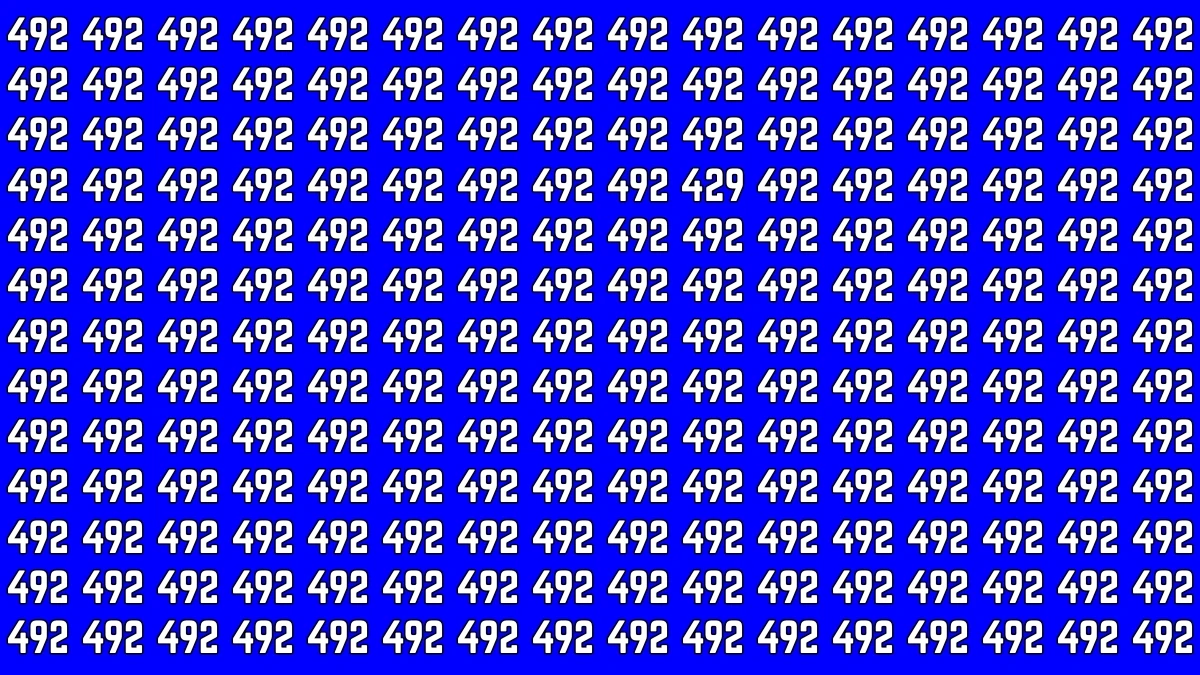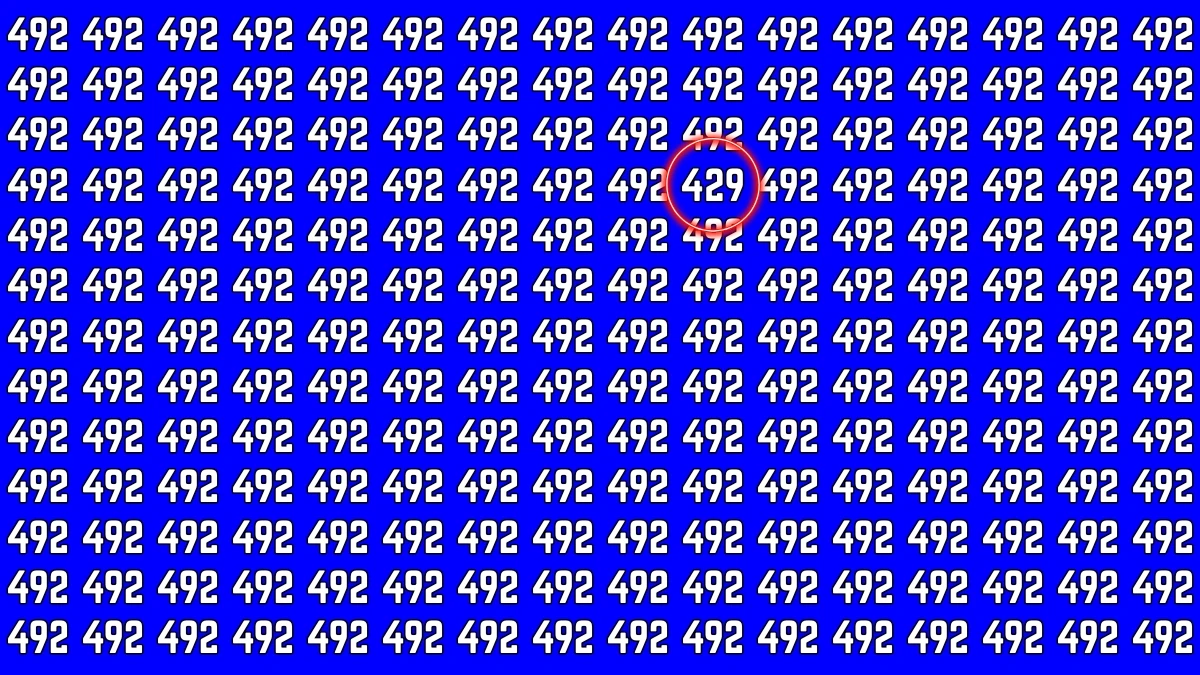Are you ready to test your brain with a visual puzzle that has stumped thousands online? This optical illusion is more than just a fun challenge it’s a window into how uniquely your mind processes information.
If you can spot the number 429 hidden in the image within just 5 seconds, your brain might be wired differently than most. At first glance, the image might look like a jumble of random numbers or shapes.
But hidden within the chaos is a distinct number 429 cleverly camouflaged by patterns, colors, or design tricks. Your goal? Find 429 in 5 seconds or less.
Are You A Genius?: Within 7 Seconds Spot The Number 3 among 5
Optical Illusion: Within 5 Seconds If You Can Spot 429, Your Brain Works Differently!
This optical illusion challenges viewers to spot the number 429 hidden within a visually complex image in under 5 seconds.
These kinds of illusions play with patterns, colors, and contrasts to trick the brain, making it harder to detect specific elements at first glance.
Successfully identifying the number quickly may suggest that your brain processes visual information in a unique or highly efficient way, especially in terms of pattern recognition and cognitive speed.
While it's mostly a fun test, it also highlights how differently our brains can interpret the same image, revealing fascinating insights into perception and mental agility.

Try this Challenge: Within 8 Seconds Spot The Inverted 38 and 83 among 83s
Optical Illusion: Within 5 Seconds If You Can Spot 429, Your Brain Works Differently! - Solution
In this optical illusion, the image is filled with the number "492" repeated across a blue background, designed to distract and challenge your visual focus.
Hidden among these identical-looking numbers is one subtle variation "429" which you are tasked to find within just 5 seconds.
This tests not only your speed but also how sharply your brain can detect anomalies in a repetitive pattern.
With careful scanning, the number "429" can be spotted in the upper right section of the image, encircled in red for confirmation.
Successfully identifying it within the time limit indicates quick pattern recognition skills and a unique way of processing visual information—traits often associated with high cognitive agility.






